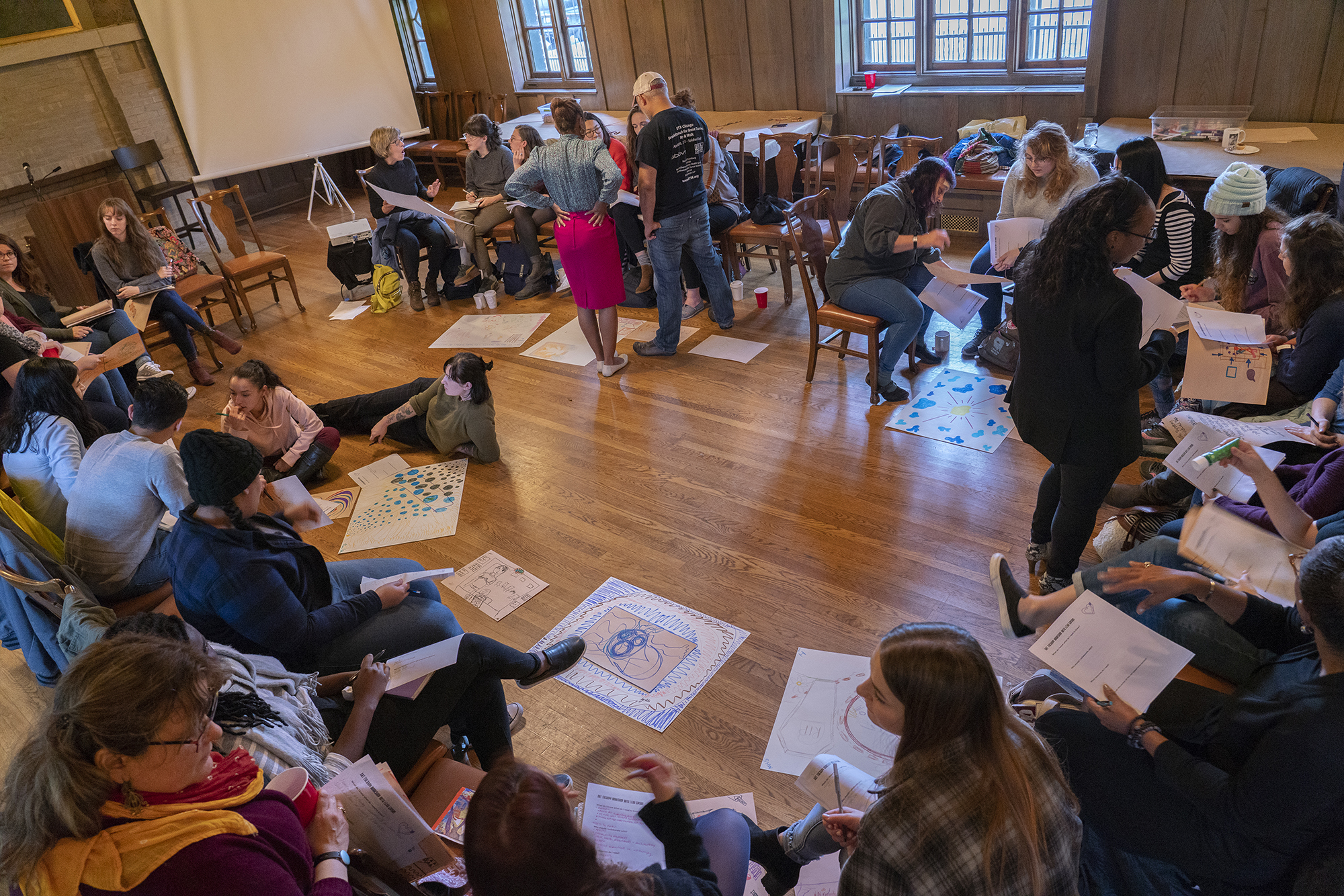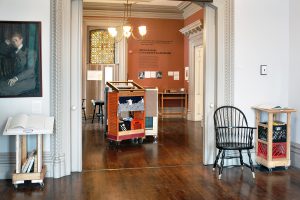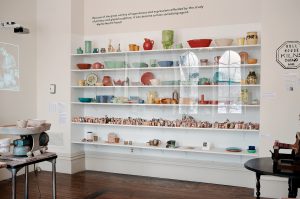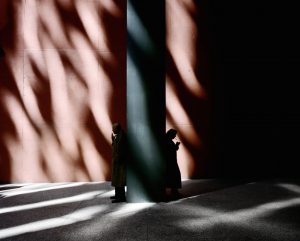As many contemporary artists, arts organizations, and other cultural laborers continue a decades-long trajectory of re-orienting their practices more deliberately towards and within the social world, forms and approaches have morphed through a collective re-imagining of the production, dissemination, and sociopolitical potential of art. These modes have sought to broaden access and participation in the arts, transform relationships between people, forge practices rooted just as much in ethics as in aesthetics, and other similar gestures toward aligning art with notions of social justice and reform. And yet amidst this grappling, a number of unresolved riddles remain regarding art’s place in daily life: What and who is art’s “community,” and what do we mean by “community”? What is art’s relationship to democracy? Can increased access to the arts also advance civic participation more broadly? What is the role of the artist in society? Can art and artists be catalysts for social change — and should they?
Such issues and questions reverberate through the Jane Addams Hull-House Museum’s current exhibition Participatory Arts: Crafting Social Change, which explores the influence that Addams and other social reformers have had on visual and performing arts in Chicago through historical and contemporary practices of bookbinding, ceramics, theatre and performance, and art therapy. The show is structured by pairing current practitioners alongside objects and artifacts from the Hull-House Museum archives and UIC Special Collections relating to important figures and moments in the settlement’s history. In addition to the exhibition, programming has featured a series of workshops led by the featured artists, as well as a symposium that explored the historical legacies, and current potentials, of art to incite social change.
Founded by Addams and Ellen Gates Starr in 1889, the Hull-House symbolized reformist ideals of the Progressive era (1890s-1920s), and was part of a nationwide movement of settlement houses which in many ways sprung up in response to the exploitations and social stratification of the Gilded Age. Operating under the notion that art and education are vital components of democracy and community life, these sites offered resources and creative outlets for new immigrants and poor and working-class neighbors in their local area.
Among them were classes taught by Sadie Ellis Garland Dreikurs that would be early seeds for the discipline of art therapy. Ellis, who grew up on the West Side of Chicago, started getting involved in art programs at Hull-House as a child and eventually became the director of community services there, which allowed her to combine her own skills in painting and printmaking with efforts in social reform. Ellis worked with youth and with psychiatric patients to establish creative expression as a source of self-acceptance and emotional strength. She also led therapeutic group painting workshops, guided by the belief that participatory, collective art-making could be a way to alleviate isolation, improve communication skills and sensitivity to others, and raise self-awareness.
Building on top of those foundations, some contemporary practitioners such as Leah Gipson have sought to push art therapy further in the direction of social justice, coinciding with a “cultural turn” that has emphasized new possibilities with community-driven art, teaching, and research. Gipson also seeks to re-imagine art therapy by uniting it more closely with freedom struggles led by people of color. A transdisciplinary artist and art therapist, her recent projects include The Rectory, an arts incubator in the Austin neighborhood of Chicago; and co-hosting DIVISIVE, a live show on Lumpen Radio which explores the intersections between politics and cultural work.
I recently spoke with Gipson about these and other projects, her views on public space and cultural space, her critical approach to psychology and art therapy, the influence of some key predecessors, art’s potential as an instigator of social change, and related topics. This is the final interview in a three-part series (see part one here and part two here) of dialogue with artists featured in Participatory Arts, on view at Hull-House until May 2019. Our conversation has been edited for clarity and length.
Greg Ruffing: Are you from Chicago, or if not, how did you end up here?
Leah Gipson: I’m from Florida originally, and I moved to Chicago in 2008. I went to the University of Central Florida in Orlando to earn my BFA from 2003 to 2007, and then I moved to Chicago for graduate school to study art therapy. I got to Chicago in what I refer to as “the year of Obama,” and it was a really interesting time. I can remember noticing the differences between being in a city like Chicago, versus Orlando where, you know, there was pretty much total disbelief that somebody like President Obama would get elected. And so moving to Chicago, this really blue city in the Midwest, was just a complete shift. The part of Florida where I’m from originally is also really different than Orlando. I’m from the panhandle, Panama City, where you can get to pretty much any major Southern city in about five hours — which some people think is a long time, but growing up, for us that was nothing. So, you know, Atlanta, New Orleans, Montgomery — the north Florida panhandle is really close to these places. So I’m from The South, and north Florida is still very Southern. My mother’s family is from Alabama, so we used to visit there a lot. So the differences when I moved to Chicago definitely influenced my thinking about what I might do and what I might study, for sure.
GR: And now that you’ve been here for about a decade, how has that influence taken shape, as far as how Chicago is influencing the work that you’ve been doing here?
LG: I’ve lived in a few different parts of the city: Boystown, Old Irving Park, and then just south of that neighborhood, to Austin on the West Side. And now I’m in Oak Park, but just across the street from Austin. I’ve worked on the West Side for most of the time that I’ve been in Chicago, and the West Side has really influenced my thinking, and the kinds of things I get into.
Most of what I’ve learned about the South and West sides has been from people who grew up here and have been here for a long time. Some people kind of talk about economics and the difference between Blacks on the South and West sides. And other times, what institutions have really shaped the neighborhoods, right? And how these neighborhoods have historically been shaped by development — I’ve really felt that impact in my experience. And I’ve been particularly interested in space: public space, vacancies, spaces that become more recognizable in terms of lack, and looking within the environments that we’re in to locate the resources. But something about that really highlights the wealth of cultural knowledge and the sort of things people do when they’re working with what they have — improvisation of neighborhood space and public space, and how people configure their lives, and how they deal with the challenges of being in this city, and the history of this city.
GR: Before you came to Chicago, did you have some kind of visual arts practice that has followed you up through grad school and into now? And how is that situated with your art therapy work?
LG: Late in my junior year in undergrad, I was on track to become a graphic designer — a sort of practical field, you know? I was really interested in painting and printmaking, but in my mind there was no way to do much with that. And as I was rounding the end of my undergrad career, I was in a painting critique — I had been working on a portrait series of African American women and women of color in my life. And I was doing these as a way to think about identity, and kind of focus on gender, race, sexuality — those things were important. And I had a classmate who had been doing these paintings that weren’t really figurative, they were kind of expressive, and she was planning to study art therapy. And for some reason, there was a connection for me in the way I was studying or trying to understand race and gender and sexuality using painting. So that’s actually how I found myself looking into art therapy, and I think I imagined there would be this kind of hybrid investigation of subjectivity and culture to meet with, and work with, other people. For me the most important part of these portraits was not necessarily what they ended up looking like, but it was in who I was working with. So that led me to art therapy, and since then, painting and printmaking barely survived that shift.
A lot of my [more recent] work has been staging events, facilitating events, those kinds of things — which I think coincides with a heightened moment for social practice. I think that made me sorta odd in art therapy, because a lot of people I studied with were thinking about emotions and a purely psychological approach to the art revealing some kind of internal psychological state, and I’m really wanting to look at the link between personal and political forces. And I’ve been trying to find conversation partners in other disciplines, so my work became more transdisciplinary.
GR: Yeah, and I’ve read and seen your practice kinda framed within this, like, “cultural turn,” right — ways in which practitioners like yourself are bringing in other research, and this community-engaged focus? Can you maybe say a little bit more about stepping outside of just the internal psychology and looking instead at these broader factors?
LG: My first internship in grad school was at Michael Reese Hospital, which was in the process of closing, and every day my supervisor would say “I don’t know if we’re going to be open tomorrow.” And there were mice in the building, and the psychiatric treatment facilities were the only parts of the hospital that were still seeing clients. Every other part of the hospital was shut down — in fact, during the time I was there, there was talk of a horror movie that was to be filmed on the campus of Michael Reese with all of its vacant tunnels and medical buildings. A lot of our clients came from group homes, or they were youth who were chronically running away or displaced in some way, or there were adults who were homeless who were able to use the medical facility in and out. So this was really my introduction to art therapy and the field, and it was infuriating for me. And my supervisor was struggling with his own role in all of this, and as a white man I think he had his own struggles about what he might be doing, and whether or not this place valued his knowledge or his work. I think he really struggled to articulate for me some of the really systemic social factors that plagued all of this, including his own role in it. So it was a really frustrating time for me to see this kind of dying institution in Bronzeville, a Black neighborhood. And I mean, sure, on an individual level the people who worked there cared for the clients. But on a social level, this was a wake-up call for me about what it was I was doing.
From there I got an internship with A Long Walk Home — I had been wanting to work more with women of color, and after my work at Michael Reese I wanted to focus more on inequalities, and was seeking a mentor who also had that focus. So I worked with an African-American woman who is an art therapist and a photographer, Scheherazade Tillet, and we actually ended up developing a youth program for A Long Walk Home. The program is called Girl/Friends Leadership Institute, and it began as a pilot program for girls of color to learn about Black feminism, the anti-rape movement, reproductive justice, and arts activism. We were primarily working with Black girls who lived on the West Side in the North Lawndale neighborhood, and that meant that everything had to change from a traditional approach to art therapy. The intervention had to be across systems, at every level.
When I talk about a “cultural turn” — and actually the scholar who has been using that term is Savneet Talwar — it has to do with locating a historical trajectory for art therapy that is tied to understanding that people are facing problems within a social world, and there’s no way to isolate those problems internally. You have to really understand the dynamics they face: what’s going on inside someone, and then the world outside that contributes to really shaping that. So when I found Cliff Joseph’s work in my professional career, it was another one of those infuriating moments of like, “why has this not been taught, why is this something I didn’t study in school?” I didn’t have more than a cursory interaction with it. Meanwhile, Cliff Joseph is 96 years old and lives in Chicago, and was here during the time I was in school — so why is it that I encountered his scholarship as sort of an afterthought or a side note? So a lot of my time has been recovering an archive, looking for an archive, trying to figure out what the profession could have been, and maybe could become, if we pay attention to those voices who are attuned to the social world.
GR: So with Joseph’s work, are there archives that already exist that you’ve been researching, or you’re interested in creating one?
LG: Yeah, there are some that I’ve been going through, one of which is a digital archive with the American Art Therapy Association. And that included documents from a woman named Lucille Venture, who was an African-American, and the first person to have what would be the equivalent of a Doctorate’s degree in art therapy. She did her dissertation in 1977. It was called “The Black Beat in Art Therapy Experiences”, and in that time period she’s linking the issues that her clients are facing with the social times. The archives include this correspondence between her and some officers in the American Art Therapy Association. She and several others, including Cliff Joseph, were trying to work within the association to build a committee they named the Third World Committee. These letters are actually about the officers in the association basically telling her “we can’t name it that.” And so it’s this back and forth of her working within the association, and also the association very overtly saying “we’re not interested in that.”
But there was a push from several Black art therapists that was in sync with the cultural times, and as I kept going, I kept stepping back and following these people that were part of this. So I discover all of this while I’m just looking through what’s available — and also basically what’s not [available].
The stuff that’s in the Hull-House show now is from the research I was doing for my chapter in Savneet Talwar’s edited book, Art Therapy for Social Justice: Radical Intersections. So I had mixed feelings. You’re excited to find this stuff [in the archives], but also disappointed and you want to know what happened that these voices were not able to become centered in the field. I’m also teaching a class right now called Black Rage: Interpreting Feeling in Anti-Slavery Imagery, and this is a really new and very different type of class for the art therapy department. As part of the class, we’re going to several archives at Stony Island Arts Bank, Newberry Library, and the Chicago History Museum. So I’ve been doing a lot of work that thinks about the archive, and I’d like to develop an art therapy archive that people could actually go to.
GR: With that kind of critical approach you’ve described, do you have a broader vision of what a more social justice oriented approach to art therapy might look like?
LG: Yeah, that’s a good question. I think there was a point in time when my answer to that would be a lot simpler than it is right now. Or maybe it’s a very close point in time — maybe just a year ago. I don’t know if you know anything about [second lady] Karen Pence and her embrace of our field? That happened about a year ago. And our professional association [AATA] did not take the opportunity to sort of reject that embrace and to say “here’s why we reject that embrace”, or “here’s why we don’t need saving.” So that was a disappointment, and really made me question the field. So if Karen Pence, whose administration has been very volatile and connected to a number of practices that are very harmful to the people that art therapists tend to work with — what draws an administration like that to this field? This didn’t happen to art education, or to the arts more broadly — it happened to art therapy. And I like to think that those things happen because of how we’re operating.
So I just think there needs to be a radical reshaping and reconfiguration of the discipline, and we should really question the ideas in a mainstream sense. Because I think something like the Art Therapy and the Third World panel asked “who are we as a profession, who are we going to be?” And I think the field has answered that question very incorrectly, to the point where we’ve reached this moment in time, with this administration that’s been — you know, Mike Pence has been linked to conversion therapy and the privatization of the VA system, and all of these things. I mean, let’s just talk about the accessibility of health care, and where this administration has stood on that! Or the violence against refugees and immigrants — these are all people that art therapists work with. So my question is, “how does the field attract that kind of embrace?” It could be because of the ideas and how the field has positioned itself in the world. And that means that we really need to critically examine our professional identity — and hopefully we can do that in conversation with other disciplines.
For me it’s also this place of questioning knowledge, looking at what knowledge is considered the most important or foundational, not just in the profession but more broadly. Looking at literature, and how the field thinks about art. And who’s authoring the knowledge that we have and are using to define the field. So I’m also thinking about the voices that we won’t read or that there won’t be articles about — and the knowledge that’s there would be very much connected to the clients I first encountered at Michael Reese Hospital. You know, what are their stories and experiences of this profession? Using that knowledge to hopefully start something different or new. Maybe what we have goes away entirely, or moves into many new configurations.
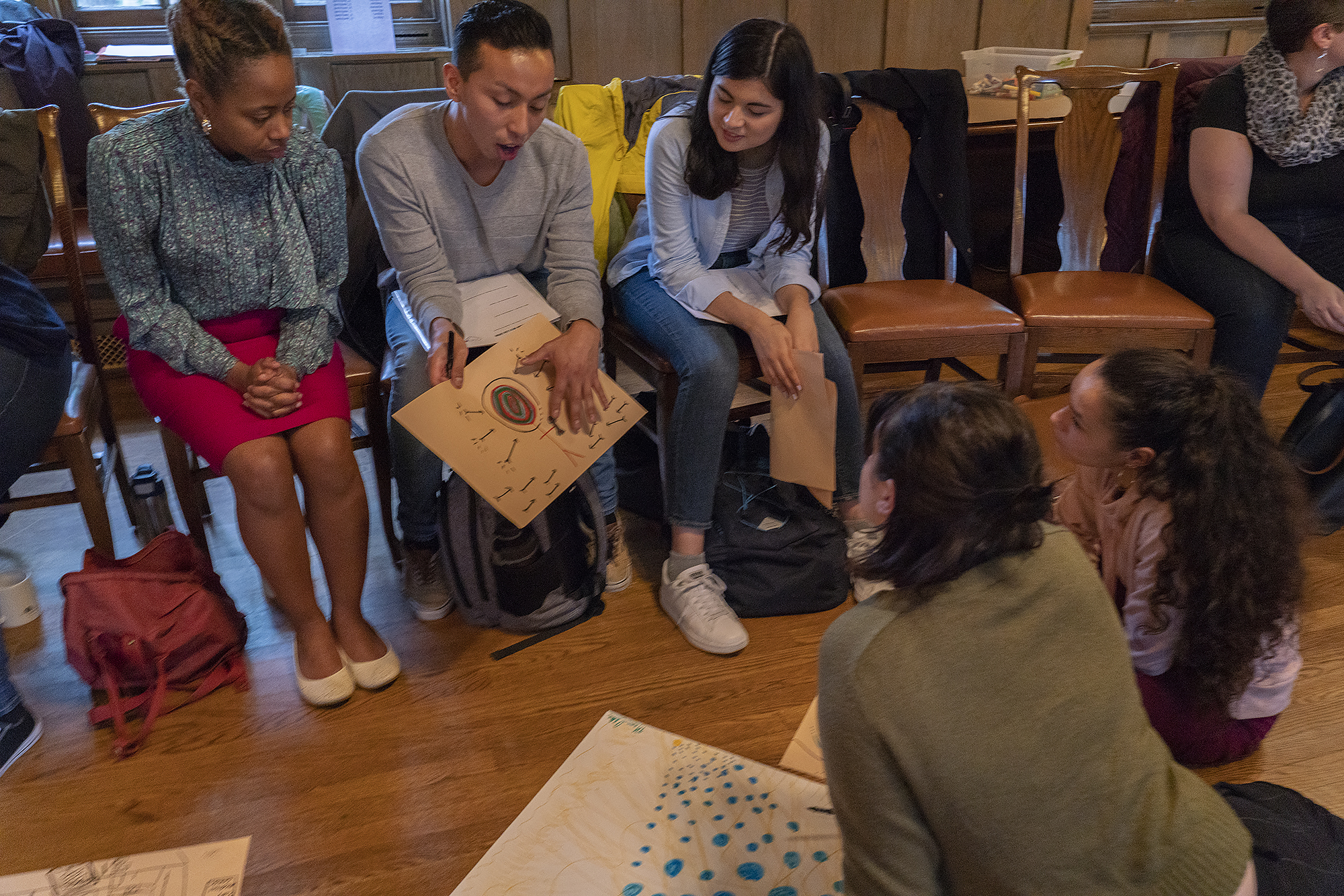
GR: I wanna follow that trail a little bit — can you talk about one or two recent projects of yours that you feel like are maybe getting in that direction, or part of your efforts to look in that direction?
LG: To talk more about A Long Walk Home, I think one of its strengths — as an organization that was founded by two sisters, Scheherazade Tillet and Salamishah Tillet — is that it’s a transdisciplinary endeavor. You have Scheherazade who is an art therapist and photographer, and her sister Salamishah is a sexual assault survivor who is a writer, and professor of English and African-American studies. Then you have the host of other people over the past 20 years who have worked with them to build the organization — dancers, actors, musicians, educators, scholars, students, so many people who are approaching this problem of sexual and racial violence from their particular places of inquiry. So working from multiple disciplines is really at the core of how the organization centers the arts and also centers the experiences of Black women and girls, and Black women and girls’ survivorship. Historically, this has been a way that Black intellectuals and artists have developed their work, where they recognize that strictly defined disciplines have not actually been able to capture the complexities of Black life. There’s always been this thread of understanding that the cultural context really shapes how people experience mental illness or trauma or displacement — any of the things that you’ll commonly see in a traditional art therapy practice. So I think that it’s this idea of working across multiple disciplines that A Long Walk Home brings to art therapy — based on all the people who become involved in using their specific knowledge to do this work — that basically allows us to really think about where we situate the knowledge that is necessary to collaborate with people, to problem-solve and effect change in their own lives. I think those kinds of qualities more broadly are what I’ve seen in [A Long Walk Home], and more specifically, really focusing on how the arts alone are not what can make this change, right? You have to be involved in organizing and activism, and you have to be very aware that a kind of model where therapy is isolated from the social world is not effective in changing the circumstances that continue to make people vulnerable.
GR: You’ve also been part of a few projects on the West Side that have been trying to create something with underused lots, and make space where there’s these artistic activities but also these broader gestures toward community building, right?
LG: Yeah, and these kinds of projects are all kind of utopic, or they’re pointing to a kind of Black Eutopia where it’s about the idea, and it’s about the space, and it’s about the collaborations. These projects are imaginative. Black Eutopia is the brainchild of another artist, Rae Chardonnay. We collaborated for her first iteration of this project in 2014 as part of a series that I was doing to create micro-funds for West Side artists. What this first Black Eutopia, which was set in Carter’s Barber Shop in North Lawndale, really captures within my interests is a focus on cultural spaces that already exist in a way, and that have the kinds of knowledge that Black communities have been leveraging to deal with social inequalities, but also for self-determination. So [for example] working at a barber shop to illuminate some of the strengths of that cultural space is in the spirit of a lot of the things that I’m often thinking about, about how to work in a hyper-local way so that the knowledges that already exist can be prominent in our current solutions to whatever problem we’re looking at.
So what could it look like if art therapy could change the political reality in which it’s understood? It’s what art therapy could look like that I am using to fuel some of my current conversations and partnerships. How do we move beyond just imagining ideal spaces? How do we use our profession to reimagine the systems that we are part of, right? We have to be the ones to transform the systems that we benefit from.
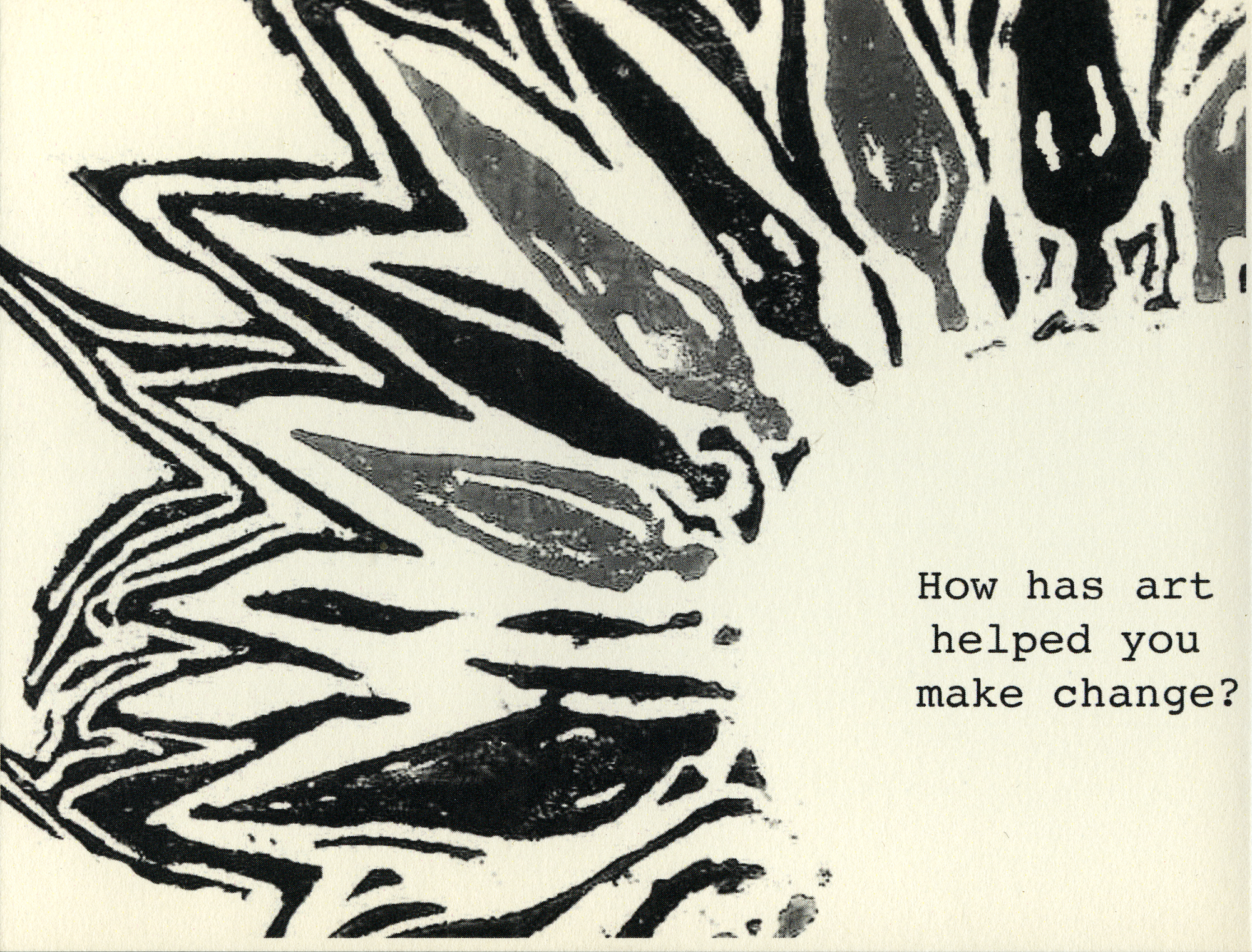
GR: Yes! Totally. And I also want to give a few minutes to ask you about Sadie Ellis Garland Dreikurs, because in the Hull-House exhibition they’ve paired each of the contemporary practitioners with these historical figures and archives, so I’m curious if there’s any specific things from her work that have influenced you or how you’re approaching your practice?
LG: I think the questions I would have for someone like Sadie are similar to questions I have for myself: how do you make change while standing within a system that you embody and that has certain material and social privilege? The tendency is to want to think our way out of that problem, and I’m not looking for an answer that would help me to solve that dilemma, because there will always be this power differential for someone who gets to do the imagining or gets to shape the conversation. So is there a possibility to use shared spaces to disrupt a system for the elite or middle-class author or thinker or idea generator? I think so, but I think it’s really challenging work, in my experience. Its long-term, very slow work.
Sadie and Cliff’s work also raise the issue of working directly with people in your context. How do you ask those difficult questions? The postcard print I have in the show has the text “How has art helped you make change?” I think it’s a simple, yet complicated question. What is the “change?” Who is the “you?” How does art “help?” Can art do anything? I’d quickly follow that with saying that art can’t do anything — we’re the ones who do things with art, or through art. Our goal isn’t to use art therapy in and of itself as the solution. It’s to reach a point where we’re actually addressing our problems as a society, and maybe using art is one way to do that. This is our work, you know, what is our labor for? This is hopefully about transforming the world that we’re in.
This article is presented in collaboration with Art Design Chicago, an initiative of the Terra Foundation for American Art exploring Chicago’s art and design legacy through more than 30 exhibitions, as well as hundreds of talks, tours and special events in 2018. www.ArtDesignChicago.org
Featured Image: Leah Gipson works with participants in an art therapy workshop at Hull-House in October, as part of the programming for the Participatory Arts exhibition. The room is packed with a large group of people gathered into a circle, with various drawings and works on paper scattered on the floor. Photo courtesy of Jane Addams Hull-House Museum / Jesse Meredith.

Greg Ruffing is an artist, writer, organizer, and curator working on topics around the production of space at different scales — from the macro level of sociopolitical structures and architecture in the built environment, down to an emphasis on community, collaboration, and exchange on the interpersonal level. He is the Photography Editor at Sixty Inches From Center.
